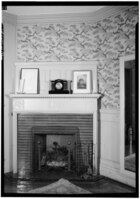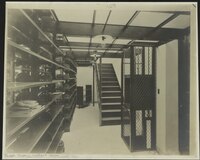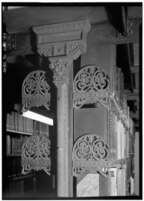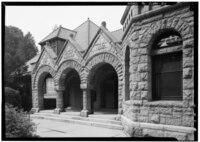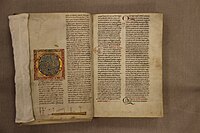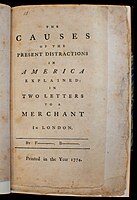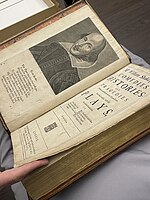Pequot Library
 | |
 | |
 | |
| Established | 1889 |
|---|---|
| Location | Southport, Connecticut, United States |
| Type | americana shakespeare |
| Website | www |
Pequot Library Association | |
| Location | Southport, Connecticut, United States of America |
|---|---|
| Built | 1894 |
| Architect | R.H. Robertson |
| Architectural style | Romanesque Revival |
| NRHP reference No. | 71000898 |
| Added to NRHP | 1970 |
The Pequot Library is an association and special collections library in Southport, Connecticut. It was founded in 1887, and opened in 1894. The library is known for its robust special collections, including William Shakespeare's First Folio, John James Audubon's Birds of America, and William Morris' work with the Kelmscott Press, as well as the first cookbook ever printed, De honesta voluptae et valetudine. The Library also has a vast circulating collection of over 116,000 books, archives, and other texts.[1]
The building, constructed in 1894 by Robert Henderson Roberston in the Romanesque Revival style, is a Contributing Property to the Southport Historic District, and is listed on the National Register of Historic Places. It contains numerous architectural marvels, including a glass floored stacks wing, Tiffany glass windows, among other features.[1]
The library takes its name from a vanquished Pequot group of 80 to 100 who had earlier fled their home territory in the Mystic area and taken refuge with approximately 200 Sasqua people who inhabited the area that is now Fairfield.[2]
Founding[edit]
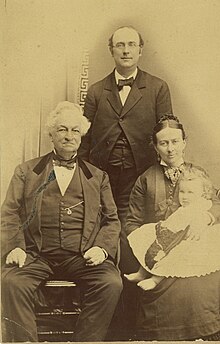
The Pequot Library was founded by Virginia Marquand Monroe (of the Marquand & Co. family) and Elbert B. Monroe as a memorial to Virginia's uncle and adoptive father, Frederick Marquand. Frederick served as President of Marquand and Co., described by contemporaries as the "principle jewelers in America."[3] During his years at the head of his family's firm, Frederick's brother, Henry Gurdon Marquand, served as his deputy.[4] Henry went on to help found the Metropolitan Museum of Art, having served as its second president. Frederick, after serving at the President of Marquand and Company, sold the business in 1838 to former apprentices William Black and Henry Ball.[5] The firm soon took the name Black, Ball, and Co. Frederick took the proceeds from the sale of his business, and invested it in New York City real estate, as well as other financial ventures.[6] Both Frederick and his brother Henry grew very wealthy. With his earnings, Henry purchased a diverse array of Old Masters paintings, including Rembrandt's Portrait of a Man.[7] Frederick lived for 50 years in a Greek Revival house on Pequot Avenue, which was razed in 1892 to reveal a new library building behind it.[8] The library was in its early years a women-led institution, with female philanthropists shepherding the fledgling organization through its construction and special collections purchases.
Community libraries, in the form of book collections and associations of dues-paying members, were not uncommon. However, these groups only lasted until the members had read all the books.[9] Through the generosity of donors and support from the Town of Fairfield, Pequot Library is able to offer its programming and resources "free as air to all" in the words of its founders, as an association library that is privately-owned by the Pequot Library Association but functions as a public-serving library.[10][11]

Architecture[edit]
The Richardsonian Romanesque building that houses the library was designed by the architect Robert Henderson Robertson and is a contributing property to the National Register of Historic Places' Southport Historic District.[12]
By the time Virginia Marquand Monroe was contemplating her library, the architect-client relationship was no longer so client-centered, and Robertson was the creative force behind the design, influenced by Henry Hobson Richardson. The library's pink granite exterior and red tile roof make a contrast with the surrounding clapboard architecture.[13]
In 2006, the Pequot Library invested in a restoration project to address the condition of the elaborate metalwork set throughout their library stacks. Robert Robertson designed each shelf in the library to be supported by cast iron structures. Each row of shelving is framed by columns and the stairways linking the two stories are made with balusters of garlands and vines in copper-plated cast iron. During the course of restoration, over 6,000 metal pieces were individually treated. The project was carried out by Howard Newman's restoration company Newmans’ Ltd.[14][15] The most recent restoration of the Library which occurred in 2020 and 2021, when the original signature terra cotta roof tiles from 1894 had replacements installed from the original manufacturer, Ludowici Roof Tile.[16][17] The project included structural repairs and waterproofing the entire original structure and was funded to the amount of $1.6 million by the community and several grants.[18]
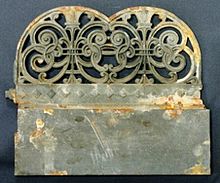 |
 |
Building Gallery[edit]
-
1966 detail of fireplace in director's room
-
Historic photograph of Pequot Library stacks
-
Detail of stack shelving
-
General view of front façade from the southeast
-
Pequot Library Tiffany glass
-
Detail of auditorium ceiling structural system
-
1966 detail of entry hall doorways
-
1966 detail of southeast front façade
Special collections[edit]
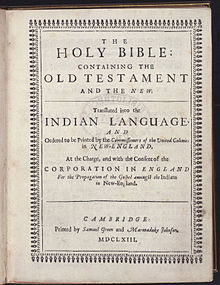


The library has a large Special Collection of manuscripts, rare books, and archives.[19][20] The permanent Special Collection includes historically significant early American manuscripts, archives, rare books, artifacts, artwork, maps, and photographs.[21] In total, the Special Collections house more than 30,000 items, many there since the library opened in 1894.[22] Most items are available for view by appointment only with staff supervision in the Dillon Reading room of the library. The Pequot library founders built the original collection to document early Americana related to the thirteen original colonies, but it has since been expanded to include early printed books, medieval manuscripts, Shakespeareana, and information from American publishing in the twentieth century. Highlights include a 1776 Norwich edition of Common Sense, sermons, and other theological works from the seventeenth to nineteenth centuries, material on Native Americans from the seventeenth to nineteenth centuries, and first editions of Louisa May Alcott’s works, and Kate Greenaway editions.[22]
A highlight in the library's Special Collection is The Birds of America Volume 2, an oversized book (2.3 by 3.4 feet) that includes a collection of full color drawings by John James Audubon that his youngest son, John Woodhouse Audubon, re-issued in 1858. The prints were reproduced via chromolithography performed by Julius Bien of New York, who was a pioneer in the technique. The volume is also known as the "Bien Edition." The pages are turned to display a new print page monthly. It is on public display in the library main reading room.[23]

Of the approximately 30,000 items in the Collections, 1,800 items are held on long-term loan at the Beinecke Rare Book & Manuscript Library at Yale University as the Monroe, Wakeman, and Holman Collection.[24] That Collection includes the first printed cookbook, De Honesta Voluptate et Valetudine,by Bartholomaeus Platina (1475); autographs of all American Presidents and the cosigners of the Declaration of Independence, including the rare Button Gwinnett autograph. It also includes much of the material associated with Joel Barlow. Among the titles in the Special Collections are Epistola de insulis nuper inventis by Christopher Columbus, translated into Latin by Leandro di Cosco and printed in 1493; two of the three contemporaneous histories of the Pequot War in New England; the Saybrook Platform which was the first book published in Connecticut in 1710.[25] Also included in the collection is Phillis Wheatley's Poems on Various Subjects, Religious and Moral from 1786.
Another Special Collections highlight centers on the private press movement, with a special emphasis on the Kelmscott Press. Privately-printed books were an ideal method for artists and writers, such as William Morris, to promote the philosophy of the Arts and Crafts movement. They believed that traditional craftsmanship brought about beautiful objects, bringing joy to the workers that created them, while the low quality substitutes of the Industrial Revolution emphasized profit over craftsmanship and were made in factories ruinous to society and the environment alike.[26]
Morris designed and formatted each of the Kelmscott Press's 53 books. The Works of Geoffrey Chaucer, held by the Library, is seen as the crowning achievement of the press.[27]
Another collection includes the only surviving typescript of the last four chapters of Margaret Mitchell's Gone With the Wind.[28]
Community events[edit]

The library accepts used book donations and hosts a large used book sale every year,[29][30] the largest in Connecticut.[31] Attracting around 8,000 people, it is the library’s largest special event, raising a significant percentage of the library’s operating budget. The sale generally has more than 60 different categories of books and media. There are also hundreds of CDs, DVDs, records and tapes.[32] In 2007, the annual summer book sale featured more than 140,000 volumes.[33]
Public programs[edit]

Pequot Library is renowned throughout Fairfield County for its adult public programming.[34] The landmark "Meet the Author" series typically occurs monthly, attracting New York Times bestselling authors from across the country, including Amor Towles, Eric Jay Dolin, Jeff Benedict, Paul Freeman, Adam Hochschild amongst others.[35]
The programming compliments the diverse array of items featured in the library's special collections. For 2023's exhibition, "The Book Beautiful: Selections from the Private Press Movement," acclaimed art historians from the Yale Center for British Art lectured on William Morris and his contribution to the field of textiles.[36] This talk also highlighted the inherent beauty of the library's William Morris-illustrated Canterbury Tales.[26] To compliment the robust collection of Shakespeare Folios, Pequot Library has hosted adult learning opportunities with trained educators in a seminar-style format. The Pequot also hosted Pulitzer Prize winning historian Stephen Greenblatt, who explored the intricacies of Pequot Library's Shakespeare holdings.[37]
Talking Heads drummer, Chris Frantz, wrote a portion of his memoir, Remain in Love: Talking Heads, Tom Tom Club, Tina (2020), at Pequot Library.[38] He has spoken at the Library multiple times, and has performed at the annual Onion Festival.[39]
Gallery[edit]
-
Problems in Geometry and Navigation, Simon Couch (1789); Pequot Library Special Collections
-
Medieval European illuminated manuscript; Pequot Library Special Collections
-
Geoffrey Chaucer, The Works of Geoffrey Chaucer (London: Kelmscott Press, 1896); Pequot Library Special Collections
-
John James Audubon’s Birds of America, Bien edition double elephant folio; Pequot Library Special Collections
-
John Locke, A Letter Concerning Toleration (Boston: Rogers & Fowle, 1743); Pequot Library Special Collections
-
Benjamin Franklin, Causes of the Present Distractions in America (1774); Pequot Library Special Collections
-
William Shakespeare, William Shakespeare's Comedies, Histories, & Tragedies (London: Thomas Coates, 1632); Pequot Library Special Collections
-
John Underhill, Newes from America (London: 1638); a contemporaneous account of the Pequot War; Pequot Library Special Collections
References[edit]
- ^ a b "Our Story". Pequot Library official website. Retrieved 2022-09-24.
- ^ "Pequot War Battlefield Project". Fairfield Museum and History Center. Retrieved 2023-10-02.
- ^ "Marquand and Co". Spencer & Marks. Retrieved 2023-09-11.
- ^ "Henry Gurdon Marquand Papers, 1852-1903" (PDF). Metropolitan Museum of Art. Retrieved 2023-09-11.
- ^ Ltd, Spencer Marks. "Marquand and Co. Pair of Antique Coin Silver Gravy Boats, NYC, NY, 1833-39". Spencer Marks Ltd. Retrieved 2024-03-04.
- ^ Del Colla, Adrianna (4 March 2024). Henry Gurdon Marquand Papers, 1852-1903. Metropolitan Museum of Art.
- ^ "Collecting Old Masters for New York: Henry Gurdon Marquand and the Metropolitan Museum of Art". Journal of Historians of Netherlandish Art. Retrieved 2024-03-04.
- ^ Lacey, Charlotte Alvord (1927). An Historical Story of Southport, Connecticut. Greens Farms, CT: Modern Books and Crafts, Inc. pp. 57, 174.
- ^ Farnham, Thomas J. (1988). Fairfield: The Biography of a Community, 1639-1989. West Kennebunk, Maine: Phoenix Publishing. p. 224. ISBN 0-914659-37-5.
- ^ "Museums and Libraries". CT.gov - Connecticut's Official State Website. Retrieved 2022-09-26.
- ^ "Home". Pequot Library. Retrieved 2022-09-25.
- ^ Economic Development & Affordable Housing, Congressman Jim Himes' website, accessed July 13, 2009
- ^ Hartman, Jan Cigliano (1989). Southport : the architectural legacy of a Connecticut village. Ralph G. Schwarz. Southport, Conn.: Southport Conservancy. p. 177. ISBN 0-9625322-0-7. OCLC 21376614.
- ^ Newmans' Ltd. Art Restoration
- ^ "SPECIALIZED". petraconstruction.com. Retrieved 2022-09-24.
- ^ "Project Of The Year Winners 2021 | Ludowici Roof Tile". 2022-04-01. Retrieved 2022-09-26.
- ^ "Pequot Library Roof Restoration Project". Pequot Library. Retrieved 2022-09-26.
- ^ Bishop, Serenity (2021-07-19). "'This exquisite architectural gem': Pequot Library restores 127-year-old roof in Fairfield". CT Insider. Retrieved 2022-09-24.
- ^ Charles, Eleanor. "If You're Thinking of Living in; Southport", New York Times, December 22, 1985.
- ^ "Collections | Pequot ArchivesSpace". specialcollections.pequotlibrary.org. Retrieved 2022-09-27.
- ^ Slocum, Bill (2005-08-14). "Americana in the Stacks". The New York Times. ISSN 0362-4331. Retrieved 2022-09-25.
- ^ a b "Special Collections & Research - Pequot Library, Southport CT". Pequot Library. Retrieved 2022-09-24.
- ^ The Birds of America Volume 2 (sign accompanying book exhibit). Pequot Library: Pequot Library Association. 2022.
- ^ "Collection: Manuscripts in the Monroe, Wakeman, and Holman Collection of the Pequot Library Association | Archives at Yale". archives.yale.edu. Retrieved 2022-09-26.
- ^ Charles, Eleanor (1980-09-14). "Treasures at Pequot". The New York Times. ISSN 0362-4331. Retrieved 2022-06-25.
- ^ a b "Kelmscott Chaucer". British Library. Retrieved 2023-09-11.
- ^ McEntee, Jessie (2023-07-06). "The Private Press Movement: Beautiful Books & Radical Ideas". Pequot Library. Retrieved 2023-09-12.
- ^ McGrath, Charles (2011-03-29). "A Piece of 'Gone With the Wind' Isn't Gone After All". The New York Times. ISSN 0362-4331. Retrieved 2022-06-25.
- ^ Digrazia, Christine (2004-07-18). "Treasures Off the Shelf: Five Days, Thousands of Books". The New York Times. ISSN 0362-4331. Retrieved 2022-09-24.
- ^ Goldstone, Lawrence; Goldstone, Nancy (2000-05-05). "Chapter 2". Slightly Chipped: Footnotes in Booklore. Macmillan. ISBN 978-0-312-26395-9.
- ^ Farewell, Susan (2010-05-18). Quick Escapes® From New York City: The Best Weekend Getaways. Rowman & Littlefield. p. 94. ISBN 978-0-7627-6300-9.
- ^ Staff (2021-07-22). "Community news: Pequot Library book sale returns and more". CT Insider. Retrieved 2022-09-24.
- ^ "Calendar" section of The Norwalk Citizen-News, July 27, 2007, p. A35
- ^ "Pequot Library kicks off 2023 with free programs". CT Insider. Retrieved 2023-09-11.
- ^ "Meet the Author: Eric Jay Dolin". Pequot Library. Retrieved 2023-09-11.
- ^ "William Morris: His Textiles and Designs". Fairfield Patch. Retrieved 2023-09-11.
- ^ "Stephen Greenblatt". Pequot Library. Retrieved 2023-09-11.
- ^ Adair. "Pequot Library Presents Talking Heads' Chris Frantz Via FB Live! Tues., July 21, 1-1:30pm". www.hamlethub.com. Retrieved 2023-10-02.
- ^ crier, our town. "Southport Globe Onion Festival, United States, Connecticut, Southport | our town crier directory for businesses in fairfield, easton, westport, weston, wilton, and norwalk, ct". ourtowncrier.com. Retrieved 2023-10-02.
- 1887 establishments in Connecticut
- Library buildings completed in 1894
- Fairfield, Connecticut
- Libraries in Fairfield County, Connecticut
- Rare book libraries in the United States
- Historic preservation organizations in the United States
- Literary archives in the United States
- Research libraries in the United States
- Libraries on the National Register of Historic Places in Connecticut
- Special collections libraries in the United States
- History museums in Connecticut
- Romanesque Revival architecture
- Romanesque Revival architecture in Connecticut
- Buildings and structures in Fairfield, Connecticut

